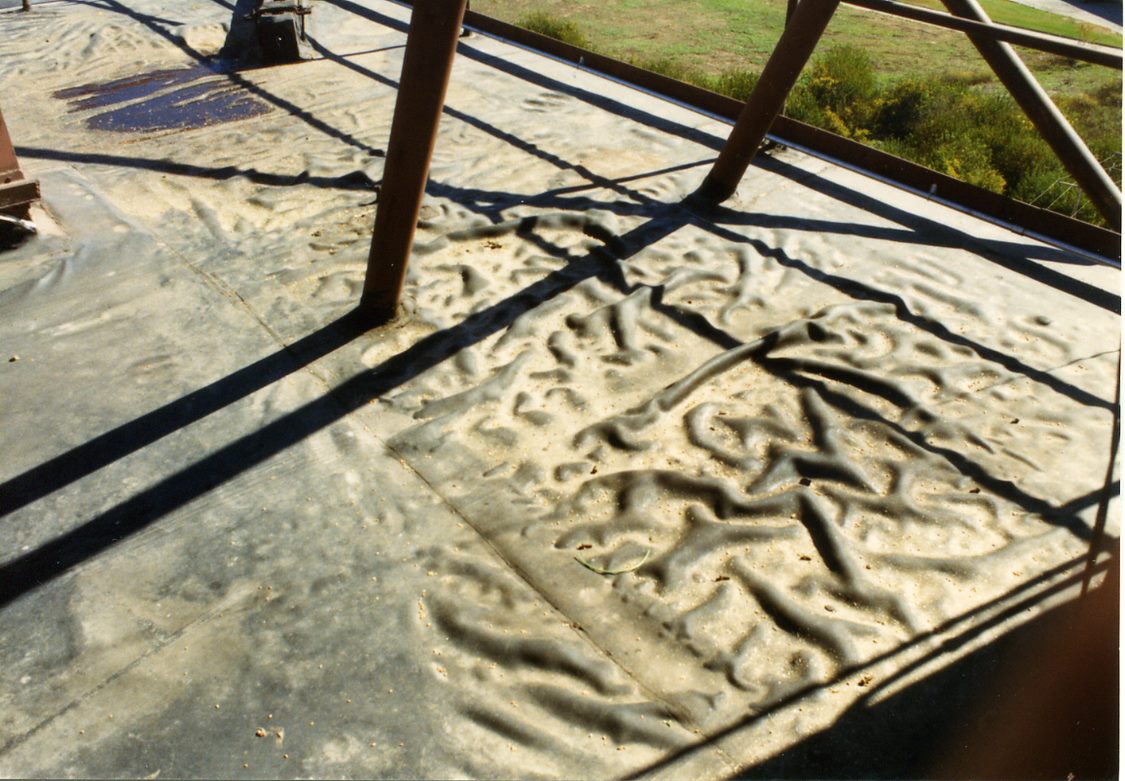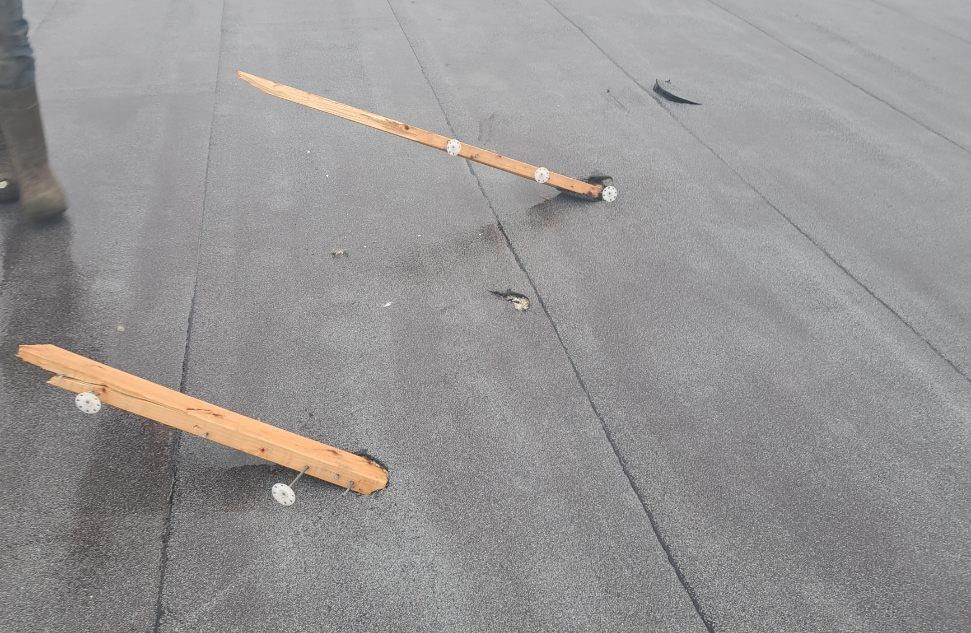Commercial roofs take a beating year-round. They’re the part of a structure most directly exposed to sunlight, precipitation, temperature fluctuations and natural building movement, so it’s no surprise that they experience occasional deficiencies over time.
However, roof problems left unchecked can intensify and require more extensive repairs, restoration or premature roof replacement. Even worse, prolonged roof leaks can weaken the structure underneath, risking a total roof collapse. That’s why it is critical that any roof defects are identified quickly to prevent further damage or safety concerns. This blog post walks through the 8 most common roofing defects and what you can do to maximize the service life of your roof.
Common Roofing Problems
1. Moss and Plants on a Roof
Roof algae, moss and other unplanned vegetation on a roof can be very detrimental if not addressed. Eventually, these rooted plants can sprout and puncture the roof system, leaving room for water ingress and leaks.
2. Standing/Ponding Water on a Roof
Standing water or ponding water refers to large puddles of water that remain 48 hours after precipitation. They can be caused by blocked drains, improper slope or various other roof defects. In any event, they signify a larger problem that should be investigated by a roofing professional. The weight from substantial, unanticipated water can also strain the structural integrity of the roof deck and lead to more significant issues.
 3. Rooftop Blisters
3. Rooftop Blisters
A blister on a roof is indicative of air and/or moisture trapped inside the roof membrane. Over time, these blisters can grow, move and even split open to allow water to enter the roof.
4. Shrinkage of Roof Materials
With extensive UV exposure, surface oxidation can cause asphalt-based roof materials to shrink in a pattern known as “alligatoring”. This process makes the exposed roof brittle and prone to cracking that could leave unprotected areas of the roof exposed to the elements. Substantial shrinkage of single-ply membranes, such as EPDM, can even be strong enough to pull flashings off the wall and damage those critical roof-to-wall details.
5. Displaced Aggregate and Granule Loss
Displaced aggregate or granule loss refers to the condition where the protective coating of aggregate on a roof system is no longer adhered and the granules are free to flow with wind and as workers move around the roof. This absence of aggregate exposes the unprotected roof surface to sunlight and accelerates roof deterioration.
 6. Holes/Punctures in a Roof
6. Holes/Punctures in a Roof
Holes in a roof membrane can be caused by fallen branches, construction tools, debris or force from any sharp object. Depending on the depth of the damage, these punctures can let air and water directly into the roof system and even leak into the building.
7. Fish Mouths in Roofing Materials
Fish mouths are raised openings formed by an edge wrinkle or a failure to properly adhere building materials. With natural expansion and contraction, fish mouths on a roof can grow and allow for water infiltration.
8. Ridging of a Roof
Improper installation of roof insulation can result in ridging on the surface of the roof deck. Roof ridges can expand, split and crack over time enabling water to enter the roof system. Ridges are typically found along the joints of the insulation boards, so they can be seen in straight lines along the entire roof deck or in a rectangular pattern known as “picture framing”.
Dangers of Roof Defects
With ongoing exposure to the elements, roof defects have a way of escalating. As seemingly minor cracks or blisters grow, water can sneak in through these weak spots, saturating the insulation and spreading leaks across the roof. Long-term roof deficiencies can weaken the structural deck, putting it at risk for a roof cave-in. Beyond the financial repercussions, ignoring your roof puts building occupants in potential danger. Don't wait until it’s too late to address necessary roof repairs.
How to Resolve Roof Defects
Step one of fixing roof defects is knowing when you have them. Walk your roof at least twice a year and look out for the issues noted above. Take photos so you can document any changes over time.
If you notice any concerning conditions on your roof, don’t try to repair them alone. Instead, contact your Tremco Roofing representative or call our 24/7 TremSource® leak management hotline so we can dispatch the right resources to your project.
We’ll complete a roof diagnosis to identify the source of the problem and work with you to remediate it within your timeframe and budget. Together, we can conduct the necessary preventative maintenance to extend the life of your roof and protect your most valuable assets.

